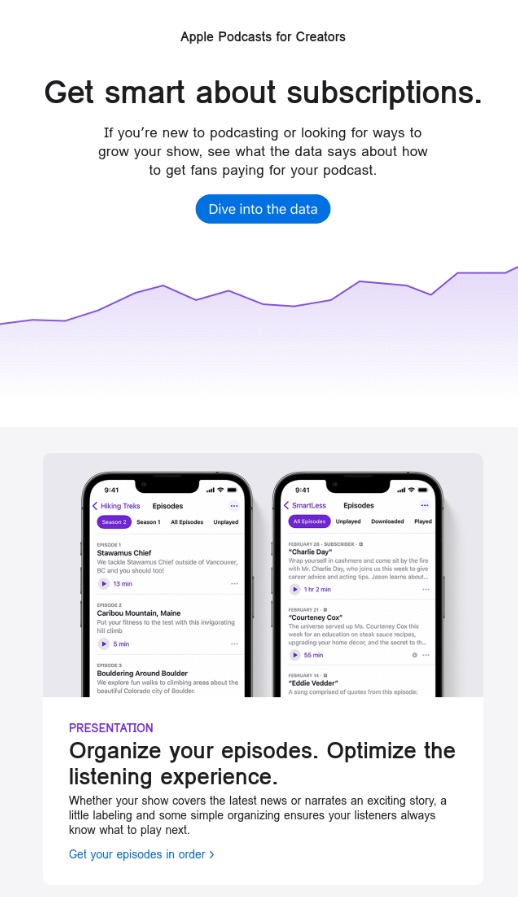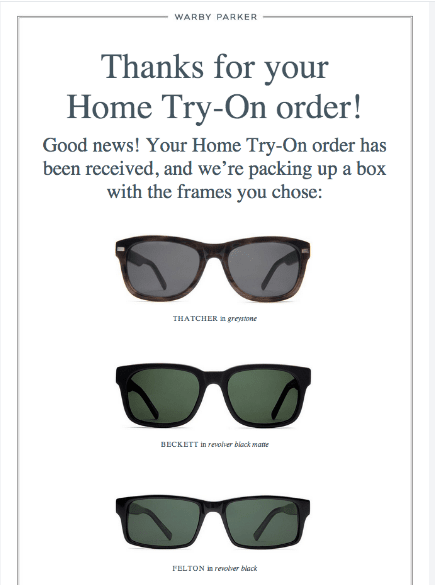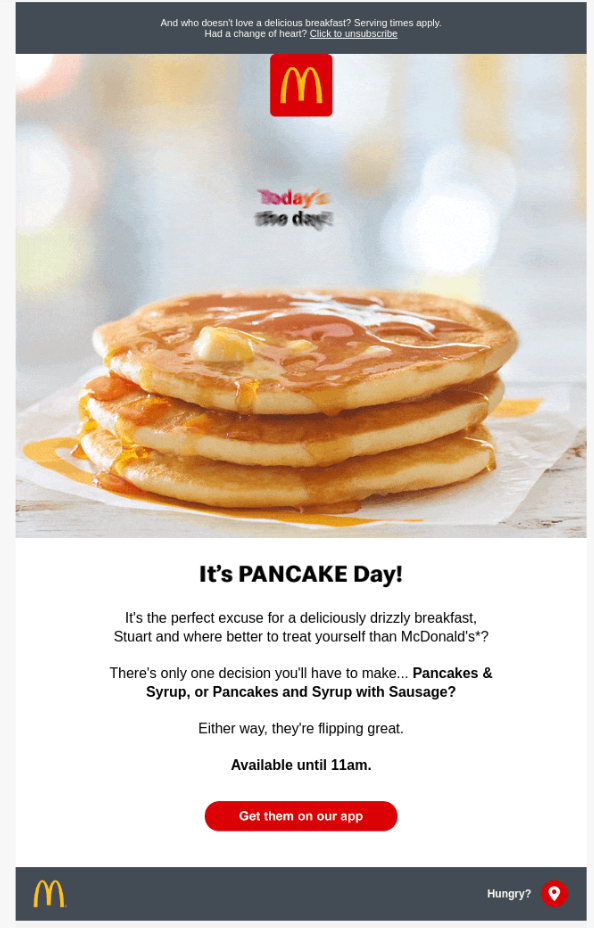Most businesses understand the importance of sending regular emails to their target audience and subscribers, but only some know how to write engaging email content.
This blog post provides a clear definition and good examples of email content to help you craft compelling email campaigns. Keep reading to learn more about email content and how it is the most important element of your email marketing strategy.
Let’s begin by gaining a clear understanding of what email content entails.
What is Email Content?
The email content is a communication sent to customers, prospective customers’, or subscribers’ inbox using an automation platform, a dedicated email builder, or personally. Basically, it’s the text, images and other multimedia you include in your email. It may be new product announcements, promotions, or weekly or monthly newsletter write-ups.
Email content plays a crucial role in your email marketing strategy, encompassing all messages sent to customers or prospects throughout their journey with your brand. Whether it’s a quick auto-reply or a detailed newsletter, the length and style of your content can vary to best engage and inform your audience.
Email Content Benefits
The valuable and insightful email content is a powerful brand recall builder and a lead-gen engine for your business. It can engage your audience, drive traffic to your website and improve your marketing ROI.
Effective email marketing involves creating content that suits the audience’s needs. Basically, it means stepping into the subscribers’ mindsets, satisfying their pain points at every stage of the customer journey, paying attention to their cultural narrative, and crafting a message. Therefore, email content requires smart copywriting, always keeping relevance and context in mind.
If you have a product to push and customer relationships to nurture, you must create engaging content for your email campaign to succeed. Here’s how effective marketing email content can help you drive your business forward:
- Driving leads and sales: Promotional emails effectively push new products, content, and offerings. Combining professional creative design and astute marketing strategies makes it possible to convert leads into customers via email.
- Customer retention: You can maintain a friendly conversation with your customer and build confidence and trust through email content. Engaging subscribers in that manner reduce customer turnover and increases your business cross-sell/upsell potential.
- Promoting brand values: What values does your business stand for? Email content’s voice is an effective way of sharing your mission/vision with the audience.
Don’t settle for boring email content. Take email marketing to another level with Sender’s Free Forever plan, an email marketing platform that includes access to our excessive library of high-converting templates and all the features you need to succeed.
Email Content Types
You can plan your email content in many ways, depending on your business goals and the audience’s expectations. Creating something that aligns your goals with expectations results in better engagement.
Here are the different types of email content formats you can use if you plan an email campaign for your brand or business:
- Promotional emails: These emails promote products, services, or special offers to customers, typically featuring discounts, sales, or limited-time deals.
- Newsletters: Newsletters provide subscribers with regular updates, news, or curated content related to a specific topic or industry, aiming to keep them informed and engaged.
- Transactional emails: These emails are triggered by a user’s interaction with a website or application and typically include order confirmations, shipping notifications, or account updates.
- Educational content: Transactional emails deliver valuable information, tips, or resources to educate recipients on a particular subject, product, or industry, fostering trust and authority.
- Welcome emails: Sent to new subscribers or customers, welcome emails introduce them to your brand, set expectations, and often include special offers or incentives to encourage engagement.
- Event invitations: These emails invite recipients to attend events, such as webinars, conferences, or product launches, providing details about the event and prompting them to RSVP.
- Customer feedback: These emails solicit customer feedback about their experiences with your products, services, or brand, helping you gather insights for improvement.
- Personalized recommendations: Personalized recommendations emails leverage data about a customer’s past interactions or preferences to provide tailored product recommendations, enhancing the shopping experience and driving conversions.
- Re-engagement emails: Sent to inactive or lapsed customers, re-engagement emails aim to reconnect with them, offering incentives or reminders to encourage them to return and re-engage with your brand.
- Holiday emails: These emails are themed around specific holidays or occasions and often include special promotions, festive greetings, or themed content to capitalize on seasonal trends and engage customers.
Email Marketing Content Examples
Now that you know different email content types, let’s see how they play out in email marketing campaigns through real-life examples:
1. Email Newsletter Content
Newsletters are the most common forms of email content you will find brands sending to their clients and audience. Newsletter content is dynamic and generally focuses on a particular theme — value addition, announcing offers, product updates, etc.
Brands have been sending newsletters via email for a long time now. Here, look at the newsletter by SimpleBits:

The newsletter content in this particular email is simple (the name justifies the simplicity) and announces their new venture. Basically, the brand is trying to introduce its new product line through the content in this newsletter. The smart use of easy-to-read copy accompanied by graphics appeals to the eyes.
Key Takeaways
- Have a recurring theme or discussion in your newsletter;
- Add value through periodic newsletter content delivered to your audience;
- Experiment with layout and graphics; newsletters needn’t always be boring.
2. Email Marketing Content
You can use email content for marketing a new product offering, service, or new feature. Email marketing is known to offer maximum ROI, so it makes sense to spend time crafting the perfect email marketing message. Even mammoths like Apple cannot ignore the benefits of email marketing. Take a look at their marketing emailer about Apple Podcasts:

The interesting email layout with separate blocks about different features is definitely a scroll stopper. You can also see how they’ve written the email content from the perspective of the reader’s lifestyle — showing how the product subscription will add value to their life.
Key Takeaways
- Highlight the product/service benefits in marketing content;
- Use contextual and clever CTAs in your marketing email;
- Create different graphics and A/B test the performance to find winning campaigns.
3. Dynamic Email Content
Dynamic email content refers to personalized sections within emails, known as “dynamic content blocks,” which adapt based on recipient data or behavior to create more relevant and engaging messaging.
A company can give its email subscribers a more personalized experience through dynamic email content. It not only makes an email valuable but helps you stand out and beat the competition. Take a look at the following dynamic email by YouTube:

The top section of the emailer is all about the user — their channel insights on YouTube. This is dynamically generated based on their performance and definitely makes a user scroll further. Plus, the heartfelt messaging (about a purpose) will make readers relate to YouTube’s goal. The contextual image (aligned with the purpose) is refreshing between so many numbers and a long paragraph. They could have personalized the salutation and email subject line with the first name, though.
Key Takeaways
- Always personalize the email content with the first name or personal attributes;
- Pepper interesting graphics and images throughout the email;
- Extract valuable data points (or personalized recommendations) to help the readers achieve their goals.
4. Interactive Email Content
An interactive email has specific moving elements (such as GIFs) in the email body that make them more interesting for the readers. The main goal of incorporating interactive elements is to boost email engagement since interactive content encourages people to continue communication.
When users click on the elements, they can be directed to add products to their shopping cart, complete a survey, or rate services. Take a look at the following email by Spirithoods:

The email’s background is interactive — changing graphics on load. It’ss definitely an attention-grabbing tactic. Also, it looks attractive and very contextual to the brand values and name. The Halloween sale announcement accompanied by such ‘wizardry’ interactive graphic is so on-point.
Key Takeaways
- Stay subtle and elegant in embedding interactive graphics;
- Keep the text less in interactive email content;
- Use such content on special occasions and holiday emails like Halloween, Christmas, etc.
5. Automated Email Content
Automation helps you pull information from your database, website or feed directly into an email. That way, you don’t have to manually copy-paste the plain text, check, format, and update the email content. This saves a lot of time, especially for large businesses that operate at scale.
Many brands curate automated email content based on their latest individual blog posts, new product collections, or launches. Take the following email by AppSumo, for example:

The email is sent to AppSumo’s email list subscribers announcing the trending/hot products in the store. Here the products are pulled from their central database, and the emails are created and sent automatically using marketing automation flows.
You can also plan something like this using a tool like Sender, which allows you to automate email content and campaigns based on your growth goals.
Key Takeaways
- Automate fresh content/product addition announcements on your website via email;
- Always have a beautiful email template with appropriate product blocks;
- Use marketing automation to compile automated email content.
6. Ecommerce Email Content
Ecommerce brands and businesses keep sending different types of emails — promotional messages, transactional emails, etc. to their customers and audience. Promotional emails let consumers know about your latest offers, while transactional emails inform them about actions on the website — delivery notifications, order confirmations, and receipts of payment.
Brands keep on testing different types of content among audiences, and here’s an example of a great email by Warby Parker that runs an online ecommerce store:

The transactional ecommerce email thanks the customer for their order and informs them of the products they picked. The product imagery and names are a great touch-up for an order confirmation email. They could have been more informative about order numbers, shipping information, and support details, though.
Key Takeaways
- Keep your email content as simple as possible — write like a 5-year-old has to read your email;
- Add relevant images and graphics to your email content;
- Never forget to add critical and contextual information to your email.
7. Email Campaign Content
An email campaign can be any email you send to your email list. Generally, brands and businesses schedule promotional emails around special occasions, days, or sale events. Take the case of the following email campaign sent by McDonald’s on Pancake Day:

The subject line for this pancake was — It’s flippin’ Pancake Day! 🥞, which informed the reader of something new and piqued their curiosity. The email has a compelling tone, asking the reader to try out pancakes by the brand. The FOMO messaging — ‘Available until 11 am’ would have driven many readers to click on the prominent ‘red’ CTA button.
Key Takeaways
- Plan your email campaigns around special days;
- Keep the content simple, straightforward, and concise;
- Add an element that piques curiosity and appeals to the FOMO.
8. Email Content Example
The video streaming uses email content to encourage its existing customers to watch more of its series. Email campaigns from Netflix are personalized and based on user preferences.
Here is an example of email content from Netflix:

Key Takeaways
- Tailor your content based on subscriber’s preferences;
- Structure your content with headlines to ease readability;
- Add images to make the content quicker to understand.
5 Elements for Effective Email Content Strategy
Writing effective email content has always been a tricky business — more if you have a million other things to take care of. If you have searched for how to write marketing email samples before, you must have encountered several best practices.
But do you know you just need to take care of 5 elements to get the best results? Here they are:
Create Catchy Subject Lines
Subject lines are the most crucial aspects that determine whether or not a recipient will open your email. If they’re boring, chances are your emails will go unread — even if you have an excellent deal.
Craft subject lines that speak to your audience’s interests and needs. Keep it short and snappy, aiming for around 50 characters or less, and consider adding a touch of personalization or urgency to grab attention. Experiment with different approaches and measure the results to continually refine your technique, all while staying true to your brand voice and values.
Focus on Your Email Preheaders
Email preheaders are the previewed text displayed under the subject line. Think of them as the subject line’s sidekick.
The headers help you expand on your subject line and capture the reader’s attention, further persuading them to read the whole email. When writing your preheaders, stick to the standard character count of about 100 characters or less. Like subject lines, they should be short and sweet.
Always Follow Good Email Design Practices
Effective email marketing campaigns rely heavily on good design. Beyond improving readability, design influences how subscribers engage with your emails. Ensuring responsiveness is also crucial, as it guarantees your emails look great and function seamlessly across all devices.
If you haven’t designed any emails before, the interface can be pretty overwhelming initially. But that’s okay because Sender’s drag-and-drop editor is user-friendly and feature-rich.

You won’t need any HTML knowledge to use the editor. Just choose a pre-made template with custom fields and personalize it with elements like tags, images, videos, and text. You can also add alt text to images in your emails and customize footers.
To design effective emails, implement the section blocks first, then add different elements. After adding the ecommerce blocks, insert the necessary content blocks and create a stunning newsletter.
Leverage Scarcity and Fear of Missing Out (FOMO)
From limited-time offers to flash sales, the scarcity principle always triggers FOMO and attracts more consumers. FOMO is standard among online users; you can leverage it in your emails.
For example, you can show a countdown timer to let customers know that your deal is only available for a limited time or use actionable words like “hurry,” “ending soon,” “don’t miss out,” and similar. This will encourage users to take action before it’s too late.
Add GIFs or Images to Your Emails
Incorporating emojis, images, or GIFs into your emails effectively caters to your recipients’ preference for visuals. It adds visual appeal and enhances the overall message delivery. One practical approach is to showcase your products or services through images, providing recipients with a clear visual representation of your offer.
This approach reinforces your brand identity and improves the chances of capturing your audience’s attention. By strategically using visuals, you can evoke curiosity and encourage recipients to take action.
Use Personalization
Personalization is key to unlocking the full potential of your email marketing efforts! When readers feel like you’re talking directly to them, your message is all the more special. So, why not take it a step further and segment your email list?
By doing so, you can create tailored emails that cater to each audience segment’s unique interests and preferences. Personalize emails to boost engagement and strengthen the bond between you and your subscribers, leading to better results for your campaign in the long run.
8 Best Practices for Writing Effective Email Content
Here are some suggestions on how to create effective email content for your next marketing campaign:
- Emphasize the benefits. Focus on highlighting the value and benefits of your products or services in your email content. Communicate how your offerings can solve your audience’s problems or fulfill their needs, making it easy for them to see the value in taking action.
- Utilize consistent branding. Maintain consistency in your brand’s visual identity across all email communications. Use branded email templates with cohesive typefaces, colors, and imagery to reinforce brand recognition and establish trust with your audience.
- Apply standardized dimensions. Keep your email templates visually appealing and user-friendly by using standardized dimensions. Consistent sizing and layout ensure a cohesive and professional appearance, enhancing the overall experience for recipients and reducing confusion.
- Avoid the spam folder. Prevent your emails from being flagged as spam by delivering targeted and relevant content that aligns with your audience’s interests and preferences. Follow email authentication best practices, maintain a clean subscriber list, and steer clear of spam trigger words or gimmicky tactics that could trigger spam filters.
- Know your target audience. Understand your audience’s demographics, preferences, and behaviors to tailor your email content effectively.
- Use clear and compact language. Communicate your message clearly and concisely, using straightforward language that is easy for recipients to understand. Avoid jargon or overly technical terms; prioritize clarity and readability in your email content.
- Ensure personalization. Make your emails feel personalized and relevant to each recipient by including their name, past purchase history, or other relevant information.
- Keep your emails relevant. Tailor your email content to match the interests and needs of your audience, ensuring that each message provides value and resonates with recipients.
Key Takeaways
- Write relevant, personalized, and useful email content;
- Always keep your audience’s pain points in mind;
- Mix and match different content formats and use analytics to track campaign performance;
- Use an A/B testing tool and marketing automation to boost your marketing effectiveness.
Want to learn more?
- 9 Elements of a 2023 Ecommerce Content Marketing Strategy
- 11 Email List Management Software and Best Practices
- Email Subject Lines Capitalization
Author Bio
Anmol Ratan Sachdeva is a content marketer and small business consultant who has a strong grip on topics like marketing automation, email marketing, and content marketing. He loves to write about starting, improving, and growing a business.

